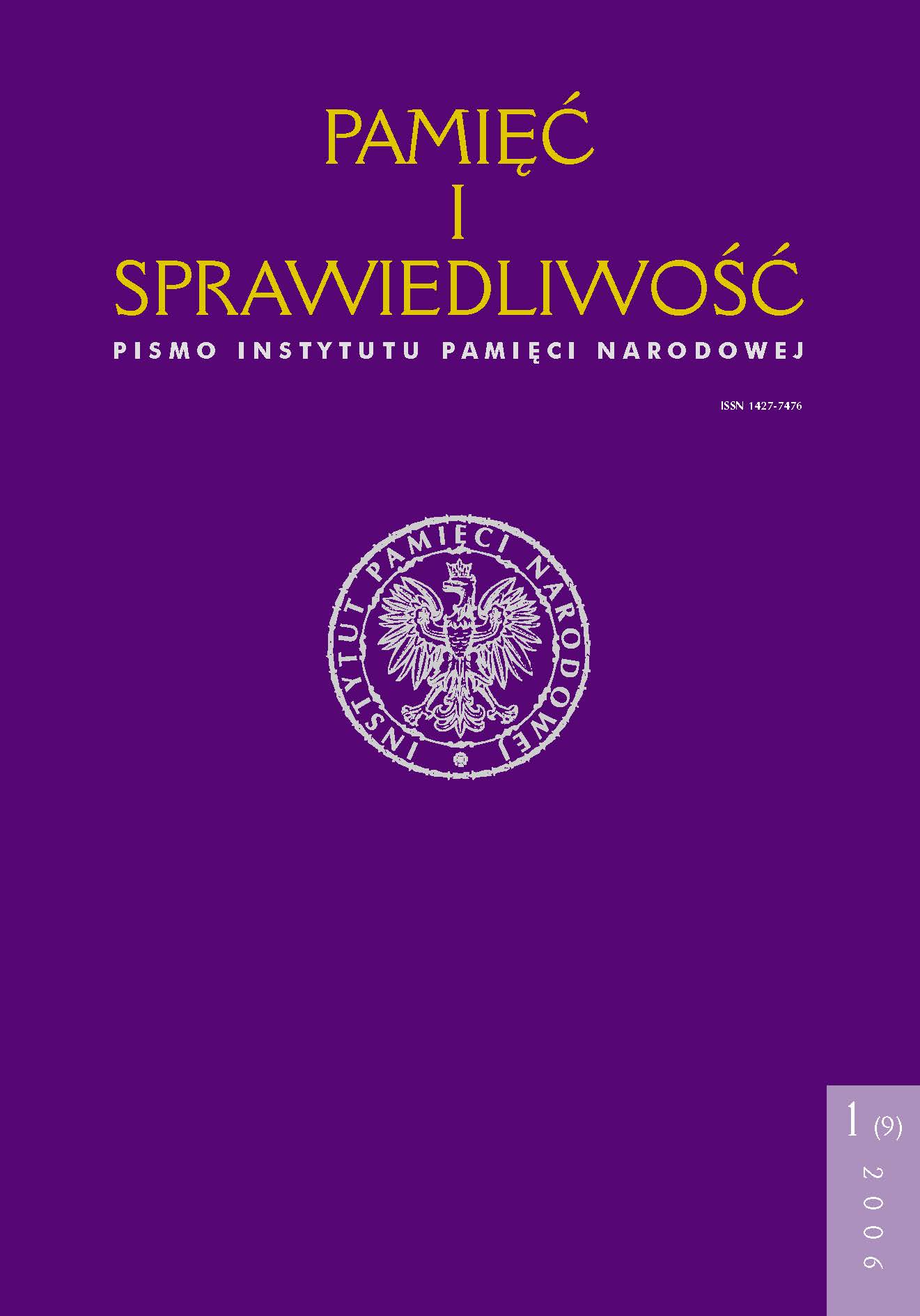Displacement of convents from the Katowice, Opole and Wroclaw provinces (August 1954)
Remembrance and Justice, Vol. 9 No. 1 (2006), pages: 309-336
Publication date: 2006-06-30
Abstract
The arrest and internment of Roman Catholic Primate Stefan Wyszyński (September 25 1953) created an unusual situation for the communist regime of Bolesław Bierut, which allowed it to completely subordinate the Roman Catholic hierarchy. A great obstacle in achieving this aim were convents, whose structures were much more resistant to the destructive religious policy. Thus the authorities of the People’s Republic of Poland decided to accomplish their aim using repressions. Based on actions conducted in the 1950’s in Czechoslovakia and Hungary, it was decided in Poland to some nuns and priests in internment camps and force them to perform compulsory work. Similar repressions were used in the case of convents in the south-western provinces of Katowice, Opole and Wrocław. The aim of this action was also to seize convent estates and to Polonize the territories given to Poland under the Potsdam Conference (July – August 1945). The displacement of nuns (code-named X-2) took place in August 1945. Those actions were justified by mostly fabricated accusations of anti-Polish activities (the displacement of ethnically German nuns), because the authorities were aware of Polish society’s anti-German bias and its anxiety over what was perceived as German revisionism. To secure acceptance for resettlements the communist authorities tried to use the authority of the Church, which was put under particular pressure, as well as ad-hoc regulations. Substantial forces and means were used during the operation, within which a crucial role was played by the security police. As part of the X-2 operation, over 1,300 nuns and 318 convents were displaced. Terror used during this action proved an efficient means. There was no resistance either from
the frightened Roman Catholic Episcopate, or from lay Catholics. It could be assumed that the displacement of the nuns from the western provinces provided testing ground for a major operation whose aim was to subordinate convents to the state. However, this action was abandoned, because of the progressing liberalization in Poland from the end of 1954, political thaw and a crisis in the security agency – which spearheaded the war against the Church. Roman Catholic Primate Wyszyƒski, who was released following the political changes triggered by what came to be known as the Polish October of 1956, eventually managed to strengthen the structures of the weakened Church. He was able to muster enough strength to oppose the communist government. Thanks to his intervention, at in the winter months of 1957–58, the displaced nuns were released.
Most read articles by the same author(s)
- Bartłomiej Noszczak, In the beginning there was a rebellion. Federation of Fighting Youth (Federacja Młodzieży Walczącej) in Warsaw (1984–1989) , Remembrance and Justice: Vol. 19 No. 1 (2012)
- Bartłomiej Noszczak, Youth Conspiracy – trial and error. Klub Wykolejeńców (1950–1951) in the light of the documentation of the secret political police of the PRL , Remembrance and Justice: Vol. 20 No. 2 (2012)
- Bartłomiej Noszczak, Solidarity amongst residents of Poznań the Student Help Committee for Political Prisoners and its continuation in the form of "foster families" (1956-1959) , Remembrance and Justice: Vol. 28 No. 2 (2016)
- Bartłomiej Noszczak, The Anti-Church International. The Cooperation of the Polish Office for Religious Denominations with its Counterparts in the States of the “People’s Democracy” (1954–1962) , Remembrance and Justice: Vol. 33 No. 1 (2019)
- Bartłomiej Noszczak, Crisis in the activities of Department VI of the Public Safety Committee aimed against the Roman Catholic Church in Poland and attempts to overcome it (1954–1956) , Remembrance and Justice: Vol. 7 No. 1 (2005)
- Bartłomiej Noszczak, Nobel Prize for a Message? The Letters of Stanisław Wawryn SJ to primate Stefan Wyszyński on the possibility of awarding the Polish Episcopacy with the Nobel Peace Prize for sending the Message to the German bishops , Remembrance and Justice: Vol. 30 No. 2 (2017)
 Język Polski
Język Polski
 English
English
 Deutsch
Deutsch
 Français (France)
Français (France)
 Italiano
Italiano
 Русский
Русский


 PDF (Język Polski)
PDF (Język Polski)
